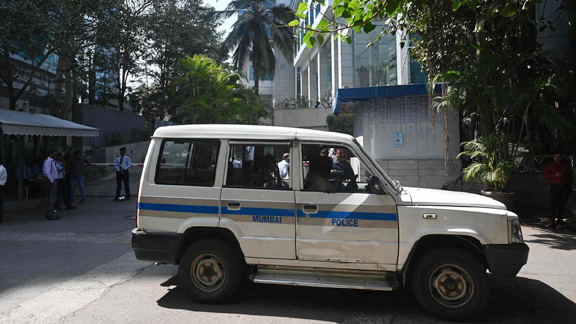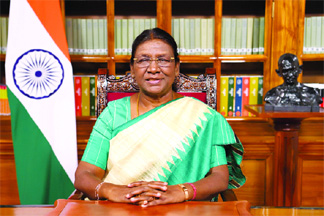
“The Supreme Court needs to revive and apply the doctrine of “effect and consequence” to consider a broader canvas of executive actions that will shape the practices of our criminal courts. For instance, in the BBC case, a relevant fact for a court to determine is not limited to allegations of tax evasion but whether the scrutiny is prompted by a documentary that is critical of the Prime Minister. Today, for a free and fair press, not only journalists but even our courts need to act without fear or favor.”

On February 14, 2023, the Income Tax Department carried out a “survey action” on the offices of the British Broadcasting Corporation (BBC) in New Delhi and Mumbai. After continuing this survey for three days, a press release was issued by the Central Board of Direct Taxes (CBDT) citing an alleged evasion of taxes on remittances and discrepancies in BBC’s transfer pricing mechanism. Many media organizations such as the Press Club of India have described the raids as “deeply unfortunate”; the Editors Guild termed them as “intimidation”. Even those who may favor the tax survey will confess that the tax scrutiny is a natural outcome of the BBC’s two-part documentary series, “India: The Modi Question”, which the BBC released on January 17, 2023. In an emergency secret order issued by the Ministry of Electronics and Information Technology, the documentary’s web links were blocked on January 20, 2023. The timing and nature of the events points to something being rotten in the state of Denmark.
Chilling message
At the root of these “survey actions” is an attempt to instill fear and self-censorship that begins with knocking on the doors of the offices of journalists. Today, these actions have become sinister as they now involve the seizure of devices. Hence, an unpleasant surprise turns into severe shock when journalists, as in the case of the BBC, are treated as potential criminals.
The CBDT press release gives us clues when it states that “crucial evidences by way of statement of employees, digital evidences and documents” were gathered. There are more pointers such as the one provided by the BBC which said that on February 19, 2023, “journalists’ computers were searched, their phones were intercepted and information was sought from them about their working methods”. Even if the case of the CBDT is perceived as legitimate, it would at its very best be limited to an accounting and financial investigation. Without any clear and compelling reasons to extend a digital dragnet on working journalists, this is what can be defined as a fishing expedition. It becomes important here to consider the wider trend of the extraction of sensitive data from journalists by using the tax and police departments across India.
Since 2018, there have been at least 10 reported instances of device searches that impact press freedom. Beginning with the Quint, they have gone on to include the proprietors and senior editors of publications such as Alt News, Bharat Samachar, Dainik Bhaskar, NewsClick, The Wire, the Independent and Public-Spirited Media Foundation (IPMSF) and journalists such as Fahad Shah, Rupesh Kumar Singh and Siddique Kappan. This anecdotal list presents an incomplete data set as the Union government has stoutly defended its inability to keep count.
Half truth in the executive response
In a parliamentary response dated August 10, 2022, the Ministry of Home Affairs has stated that since “police” and, “law and order”, are topics within the competence of State governments, it cannot “centrally maintain” device seizures of journalists. This is a half truth for two reasons. The first is that the Crime in India report queries data from State governments and can easily be extended to include data on device seizures of journalists. Second, many of the searches and seizures have been performed by central agencies such as the Income-Tax Department and such a record can be maintained and published by the Ministry of Finance. Such institutional evasion only increases suspicion about the bona fides of prosecutions and also represents a lack of intent for any studied consideration by the executive, particularly the Union government. It also unearths a myopic, yet widely held, belief that protection of freedom of speech, especially its most critical voices, is a democratic duty limited to the courts. Here, the popular view of trial courts as a bulwark against threats to our constitutional rights is rhetorical to legal academics and trial court practitioners who honestly assess their role. Their underlying institutional cultures are what lawyer Abhinav Sekhri terms as “rooted in the avowed colonial mentality of maximizing state interests while depriving any semblance of protection to the accused persons”.
This analysis has been dealt with in a paper that specifically looks at powers to unlock smartphones, drawing from the Code of Criminal Procedure, 1973 — the procedural law to govern criminal cases in India. It indicates that specific legal provisions provide for unfettered discretion to police officers apart from a carceral spirit that resides within our criminal justice system, deeply ingrained and practiced for decades. This results in outcomes where criminal courts rarely check the police for their investigatory practices and evidence collection.
It is here that one may find an answer to the questionable legality of the CBDT’s “survey action”, as pointed out by tax experts such as Deepak Joshi. Without any fear of sanction, or checks on their powers, investigating officers in a “survey action” will freely conduct a more invasive, “search and seizure”. Oblivious to the limitations and spirit of the text in the Income Tax Act, 1961, abuses will only increase given the perceptible political interests and the impossibility for any real sanction.
A way out
In the absence of such checks and balances and also the unlikely event of systemic reforms, what is the role that constitutional courts play? Here, there is adequate room for the application and development of doctrines for press freedom. The first cluster requires the application of the fundamental right to privacy drawn from the Supreme Court’s judgment in K.S. Puttaswamy vs Union of India (2017). More than five years since the judgment was first pronounced, its application to the criminal justice system here is awaited in cases of electronic evidence. Resurrecting the D.K. Basu guidelines as relevant for a digital India may also be a way out. Stricter procedural safeguards are required today due to digitization, as the Supreme Court of the United States noted in Riley vs State of California. It said: “Cell phones differ in both a quantitative and a qualitative sense from other objects that might be kept on an arrestee’s person.”
Such guidelines will only provide partial relief. It will require case specific and clear pronouncements on facts that consider how legal processes are abused in the device seizures of journalists. This recent trend is an adaptation of an old template where a muscular executive sidesteps a direct response to a critical article and in bad faith directs legal scrutiny on the publication itself. Such mischievous government actions have been considered by the Supreme Court in several press freedom cases, leading to the partial expansion of the “direct and inevitable” to the “effect and consequence” test. However, as jurist Rajeev Dhawan observed in 1986, “the partial attention paid to the operational and institutional needs of the press… seems to have died out”. There has indeed been a long and tragic silence on press freedom over decades.
The Supreme Court needs to revive and apply the doctrine of “effect and consequence” to consider a broader canvas of executive actions that will shape the practices of our criminal courts. For instance, in the BBC case, a relevant fact for a court to determine is not limited to allegations of tax evasion but whether the scrutiny is prompted by a documentary that is critical of the Prime Minister. Today, for a free and fair press, not only journalists but even our courts need to act without fear or favor.
(The author is the Co-founder and Executive Director of the Internet Freedom Foundation, India)





Be the first to comment